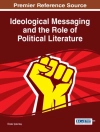Indonesians and Their Arab World explores the ways contemporary Indonesians understand their relationship to the Arab world. Despite being home to the largest Muslim population in the world, Indonesia exists on the periphery of an Islamic world centered around the Arabian Peninsula. Mirjam Lücking approaches the problem of interpreting the current conservative turn in Indonesian Islam by considering the ways personal relationships, public discourse, and matters of religious self-understanding guide two groups of Indonesians who actually travel to the Arabian Peninsula—labor migrants and Mecca pilgrims—in becoming physically mobile and making their mobility meaningful. This concept, which Lücking calls ‘guided mobility, ‘ reveals that changes in Indonesian Islamic traditions are grounded in domestic social constellations and calls claims of outward Arab influence in Indonesia into question. With three levels of comparison (urban and rural areas, Madura and Central Java, and migrants and pilgrims), this ethnographic case study foregrounds how different regional and socioeconomic contexts determine Indonesians’ various engagements with the Arab world.
Содержание
Introduction: Whose Arab World Is It?
1. Indonesia and the Arab World, Then and Now
2. The Beaten Tracks and Embedded Returns of Migrants and Pilgrims
3. Arab Others Abroad and at Home
4. Alternative Routes in Madura and Translational Moments in Java
Conclusion: Continuity through Guided Mobility
Об авторе
Mirjam Lücking is a Postdoctoral Fellow in the Martin Buber Society at the Hebrew University of Jerusalem.












